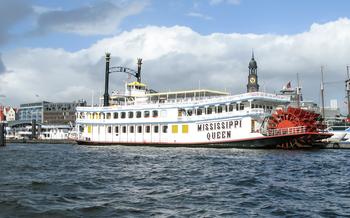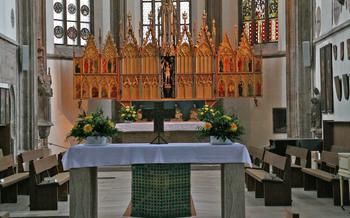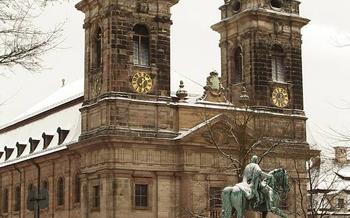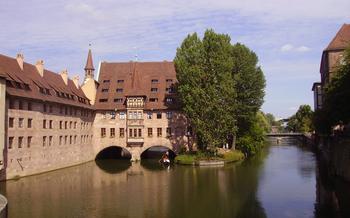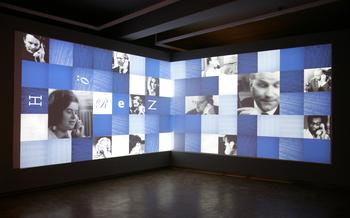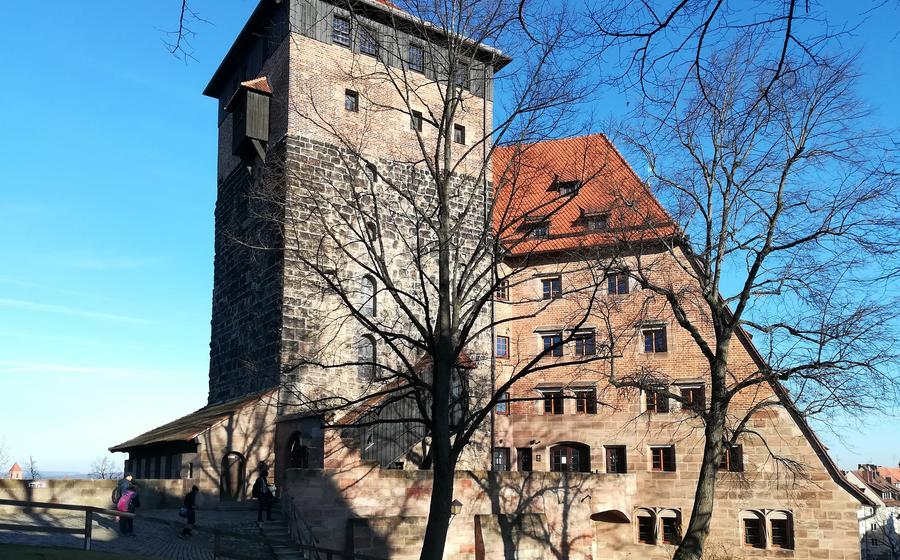
Museum of Cultural History of Firefighting (Feuerwehrmuseum)
- Feuerwehrmuseum: A Unique Destination for Firefighting Enthusiasts
- Exploring the Museum's Collection
- Firefighting Equipment Through the Ages
- Interactive Exhibits and Demonstrations
- Firefighting Techniques and Strategies
- The Role of Firefighters in Society
- Fire Safety Education for Visitors
- Historical Context of Firefighting in Nuremberg
- Temporary Exhibitions and Special Events
- Research and Documentation Center: A Treasure Trove of Firefighting Knowledge
- Museum Shop and Souvenirs
- Accessibility and Visitor Information
- Volunteer Opportunities and Community Involvement
- Insider Tip: Hidden Gem of the Museum
Feuerwehrmuseum: A Unique Destination for Firefighting Enthusiasts
The Feuerwehrmuseum, or Firefighting Museum, in Nuremberg, Germany, is a must-visit destination for anyone interested in the history and culture of firefighting. Founded in 1953, the museum is a leading institution dedicated to preserving and showcasing the rich heritage of firefighting from around the world. With a collection of over 10,000 artifacts, including historical firefighting equipment, vehicles, uniforms, and documents, the museum offers a comprehensive and engaging exploration of the evolution of firefighting techniques and strategies. Interactive exhibits and educational programs make the museum a popular attraction for visitors of all ages, providing a unique and immersive experience that brings the history of firefighting to life. The museum's significance extends beyond its collection and exhibits; it serves as a vital center for research and documentation, preserving and disseminating knowledge about firefighting to researchers, historians, and the general public.
Exploring the Museum's Collection
The Feuerwehrmuseum boasts a diverse collection of firefighting artifacts that offer a glimpse into the history and evolution of firefighting practices. From hand-operated pumps to horse-drawn carriages and modern fire engines, the museum showcases the technological advancements that have shaped firefighting over the centuries. Visitors can marvel at the intricate designs of early firefighting equipment, such as hand-pumps that required teamwork and coordination to operate. The museum also houses a collection of firefighting uniforms, helmets, and other protective gear from different eras, providing insights into the changing safety measures and protective clothing worn by firefighters. A highlight of the collection is the display of historical documents, photographs, and films that offer a glimpse into the lives and experiences of firefighters from the past. These visual archives bring to life the challenges and triumphs of firefighting throughout history.
Firefighting Equipment Through the Ages
The Feuerwehrmuseum showcases the evolution of firefighting equipment, from simple buckets and ladders to modern, high-tech apparatus. The collection includes hand-operated pumps, horse-drawn carriages, and motorized fire trucks, each representing a significant milestone in firefighting history.
One of the highlights is the 18th-century hand-operated pump, a testament to the ingenuity and resilience of early firefighters. Visitors can marvel at its intricate design and imagine the physical strength required to operate it effectively.
The museum also houses a collection of horse-drawn fire engines, including a 19th-century model that was once the mainstay of firefighting operations in Nuremberg. These vehicles, with their elegant designs and polished brass fittings, offer a glimpse into the transition from manual to mechanized firefighting.
The transition to motorized fire trucks marked a significant leap forward in firefighting technology. The museum's collection includes several early motorized fire engines, including a 1920s model that was one of the first to be used in Nuremberg. These vehicles, with their powerful engines and advanced features, demonstrate the rapid advancements in firefighting technology during the 20th century.
The museum's collection of firefighting equipment is not just a display of historical artifacts but also a testament to the dedication and innovation of firefighters throughout history. Each piece of equipment represents the tireless efforts of inventors, engineers, and firefighters to improve firefighting techniques and save lives.
Interactive Exhibits and Demonstrations
The Feuerwehrmuseum offers a range of interactive exhibits and demonstrations that bring the history of firefighting to life for visitors of all ages. Step into the shoes of a firefighter and experience the thrill of operating a hand pump or trying on firefighting gear. Witness live demonstrations of firefighting techniques and equipment, gaining insights into the real-world challenges faced by firefighters. These interactive experiences not only entertain but also educate, leaving visitors with a newfound appreciation for the bravery and dedication of firefighters.
I had the opportunity to try my hand at operating a hand pump, and it was surprisingly challenging! The sheer force required to generate enough pressure to extinguish a fire made me realize the incredible strength and endurance that firefighters possess. The live demonstration of a controlled burn and subsequent firefighting efforts was equally impressive. Watching the firefighters work together seamlessly to contain and extinguish the blaze was a testament to their training and professionalism.
Firefighting Techniques and Strategies
Throughout history, firefighters have employed various techniques and strategies to combat fires and protect lives and property. In the early days, firefighting was primarily focused on containment and suppression, using simple tools such as buckets, ladders, and hand-operated pumps. As technology advanced, firefighting techniques evolved to incorporate steam-powered engines, motorized fire trucks, and specialized equipment.
One significant development in firefighting was the introduction of water-based firefighting systems. Firefighters learned to use water to extinguish fires more effectively by directing it at the base of the flames or using hoses to reach higher floors of buildings. The invention of the fire hydrant in the 19th century further improved water-based firefighting by providing a reliable source of water for firefighters.
Another important advancement was the development of specialized firefighting equipment. Firefighters began using protective clothing, helmets, and breathing apparatus to protect themselves from heat, smoke, and toxic gases. They also employed specialized tools such as axes, crowbars, and ladders to gain access to burning buildings, rescue victims, and extinguish fires.
The evolution of firefighting techniques and strategies has been closely linked to the development of training and education for firefighters. Recognizing the importance of specialized knowledge and skills, fire departments around the world established training programs to prepare firefighters for the challenges they would face on the job. These programs covered topics such as fire behavior, firefighting tactics, hazardous materials handling, and emergency medical services.
As a result of these advancements, firefighting techniques and strategies have become increasingly effective over time, leading to a reduction in fire-related injuries and deaths. Fire departments around the world continue to invest in research and development to improve their firefighting capabilities and protect their communities from the devastating effects of fires.
The Role of Firefighters in Society
Firefighters play a crucial role in society as protectors of life and property. They are the first responders to fires, often risking their lives to save others. Firefighters are highly trained professionals who are skilled in firefighting techniques, emergency medical services, and hazardous materials handling. They work around the clock, responding to emergencies in all types of weather and conditions.
Firefighters are also active in their communities, participating in fire prevention education and outreach programs. They visit schools, businesses, and community organizations to teach people about fire safety and prevention measures. Firefighters also conduct fire drills and inspections to help ensure that buildings are safe and up to code.
The selfless dedication and bravery of firefighters are truly remarkable. They are willing to put their lives on the line to protect others, and they do so with courage, compassion, and professionalism. Firefighters are an essential part of our communities, and we owe them our gratitude for their tireless efforts to keep us safe.
Here's a story that exemplifies the courage and compassion of firefighters:
In a small town, a fire broke out in a residential building. The fire spread quickly, trapping several people inside. Firefighters arrived on the scene and immediately began searching for survivors. One firefighter, named John, heard a faint cry for help coming from the second floor. He raced up the stairs, dodging falling debris and intense heat.
John found a young woman trapped in a smoke-filled room. She was unconscious and barely breathing. John carefully carried her out of the building and handed her over to paramedics. The woman survived, thanks to John's quick thinking and bravery.
John's story is just one example of the many heroic acts that firefighters perform every day. They are truly everyday heroes who deserve our respect and admiration.
Fire Safety Education for Visitors
The Feuerwehrmuseum is committed to promoting fire safety awareness and prevention through its educational programs and initiatives. Interactive exhibits and activities teach visitors about fire hazards, prevention measures, and emergency response. The museum collaborates with local schools and organizations to provide fire safety education to children and adults, fostering a culture of safety and preparedness in the community. Visitors can learn about fire escape plans, fire extinguisher use, and the importance of smoke detectors through hands-on experiences and engaging demonstrations. By emphasizing the crucial role of fire safety in protecting lives and property, the museum empowers visitors to take an active role in preventing fires and minimizing their impact.
Historical Context of Firefighting in Nuremberg
Nuremberg's firefighting history is deeply intertwined with the city's development and growth. In the early days, volunteer fire brigades were formed by local citizens to protect their community from fires. These brigades were equipped with simple tools and relied on cooperation and teamwork to extinguish fires. As the city expanded and the risk of fires increased, the need for a more organized and professional fire department became apparent.
In 1855, the Nuremberg Fire Department was officially established, marking a significant milestone in the city's firefighting history. The department was initially equipped with horse-drawn fire engines and hand-operated pumps, which were gradually replaced by more modern equipment over time. The firefighters faced numerous challenges, including narrow streets, dense buildings, and a lack of water sources, which required them to be resourceful and innovative in their firefighting tactics.
Throughout its history, Nuremberg has experienced several notable fires that have shaped the city's firefighting efforts. In 1477, a devastating fire destroyed large parts of the city center, leading to the establishment of stricter fire regulations and building codes. The Feuerwehrmuseum houses artifacts and exhibits related to this fire, providing visitors with a glimpse into the challenges faced by firefighters in the past.
The museum also showcases the role of firefighters during World War II, when Nuremberg was heavily bombed by Allied forces. Firefighters played a crucial role in extinguishing fires, rescuing civilians, and clearing debris, demonstrating their unwavering commitment to protecting the city and its inhabitants.
Today, the Nuremberg Fire Department is a highly trained and well-equipped organization that continues to uphold the legacy of its predecessors. The department works closely with the Feuerwehrmuseum to preserve and promote the history of firefighting in Nuremberg, ensuring that the sacrifices and contributions of firefighters are never forgotten.
Temporary Exhibitions and Special Events
The Feuerwehrmuseum hosts temporary exhibitions and special events throughout the year, offering visitors a fresh perspective on firefighting history and culture. These exhibitions may focus on specific themes, historical events, or the latest developments in firefighting technology. The museum collaborates with other institutions and organizations to bring these special events to life, creating a dynamic and engaging experience for visitors.
Upcoming exhibitions or events are announced on the museum's website and social media channels, so visitors are encouraged to check before their visit. Past exhibitions have explored topics such as the history of women in firefighting, the evolution of fire engines, and the role of fire brigades in major historical events. These exhibitions often feature unique artifacts, interactive displays, and hands-on activities, providing visitors with a deeper understanding of firefighting and its impact on society.
Research and Documentation Center: A Treasure Trove of Firefighting Knowledge
The Feuerwehrmuseum houses a comprehensive research and documentation center that serves as a hub of knowledge for firefighting history and technology. This center is a treasure trove of information, boasting an extensive collection of books, journals, and other publications related to firefighting. Researchers, historians, and the general public can access this wealth of information to delve deeper into the fascinating world of firefighting. The center's resources have been instrumental in supporting research projects and contributing to a greater understanding of firefighting practices and innovations throughout history. Visitors are encouraged to explore this valuable resource and gain insights into the rich heritage of firefighting.
Museum Shop and Souvenirs
The Feuerwehrmuseum offers a well-stocked museum shop where visitors can purchase a variety of souvenirs, books, and other items related to firefighting history and culture. From unique firefighting memorabilia to educational books and toys, the shop provides something for every visitor.
One popular item is the museum's replica firefighter helmets, available in various sizes and designs. These helmets make a great souvenir for both children and adults, and they can even be personalized with a name or message.
Another popular item is the museum's collection of firefighting books. These books cover a wide range of topics, from the history of firefighting to the latest firefighting techniques and equipment. Whether you're a firefighter, a history buff, or simply someone who is fascinated by firefighting, you're sure to find a book that interests you.
The proceeds from the museum shop help to support the museum's ongoing operations and educational programs. By purchasing a souvenir or book from the shop, you can help to ensure that the museum continues to preserve and share the history of firefighting for generations to come.
Accessibility and Visitor Information
The Feuerwehrmuseum is committed to providing an accessible and welcoming environment for all visitors. The museum is wheelchair accessible, with ramps and elevators available to navigate the different levels. Visitors with disabilities are entitled to discounted admission fees, and guided tours can be arranged upon request.
The museum is open to the public from Tuesday to Sunday, with varying hours depending on the season. Admission fees are affordable, with discounts available for students, seniors, and groups. Guided tours are available for an additional fee and can be booked in advance to ensure availability.
To make the most of your visit, plan your trip carefully. The museum is busiest during weekends and school holidays, so consider visiting on a weekday if you prefer a quieter experience. Guided tours are highly recommended, as they provide in-depth insights into the museum's collection and history.
Whether you're a firefighting enthusiast, a history buff, or simply looking for a fun and educational day out, the Feuerwehrmuseum is a must-visit destination. With its impressive collection, interactive exhibits, and knowledgeable staff, the museum offers a unique and unforgettable experience for visitors of all ages.
Volunteer Opportunities and Community Involvement
The Feuerwehrmuseum offers a rewarding opportunity for individuals passionate about firefighting history and education to get involved as volunteers. These dedicated individuals play a vital role in supporting the museum's operations and preserving the legacy of firefighting. Volunteers have the chance to lead guided tours, assist with educational programs and special events, conduct research, and contribute to the museum's collection.
By volunteering at the Feuerwehrmuseum, individuals not only gain valuable knowledge and skills but also become part of a vibrant community of like-minded enthusiasts. They have the opportunity to interact with visitors from all walks of life, share their passion for firefighting history, and make a positive impact on the museum and the community.
One of the most rewarding aspects of volunteering at the Feuerwehrmuseum is the opportunity to contribute to the preservation of firefighting heritage. Volunteers help to maintain and restore artifacts, document firefighting history, and share stories of bravery and sacrifice. Their efforts ensure that the legacy of firefighting is preserved for future generations.
If you are interested in becoming a volunteer at the Feuerwehrmuseum, please visit the museum's website or contact the museum directly. There are various volunteer positions available, and the museum welcomes individuals from all backgrounds and experiences.
Insider Tip: Hidden Gem of the Museum
Amidst the impressive collection of firefighting artifacts, one hidden gem that visitors may overlook is the Firefighter's Diary. Tucked away in a corner of the museum, this unassuming notebook holds the personal account of a firefighter who served in Nuremberg during the early 1900s. Through his detailed entries, visitors can gain a glimpse into the daily life, challenges, and triumphs of a firefighter in a bygone era. The diary offers a rare and intimate perspective on the history of firefighting and the dedication of those who risked their lives to protect their community. Visitors are encouraged to take a moment to explore this hidden gem and discover the stories that lie within its pages.

